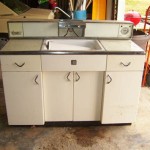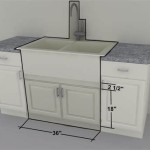Mould in Kitchen Cupboards: An Essential Guide
Mould growth in kitchen cupboards is a common problem that can impact both the appearance and safety of your kitchen. Understanding the causes and effects of mould, as well as effective methods for prevention and treatment, is crucial to maintain a healthy and hygienic kitchen environment.
Causes of Mould Growth
Mould thrives in warm, moist environments. Key factors contributing to mould growth in kitchen cupboards include:
- Moisture: Leaks from pipes or appliances, condensation on cold surfaces, or excessive humidity can create an ideal breeding ground for mould.
- Lack of Ventilation: Closed-off or poorly ventilated cupboards can trap moisture and facilitate mould growth.
- Food Debris: Food scraps or spillage left in cupboards can attract moisture and provide nutrients for mould to flourish.
Health Effects of Mould
Exposure to mould can trigger a range of health issues, including:
- Respiratory Problems: Mould spores can irritate the respiratory system, causing symptoms such as sneezing, coughing, and shortness of breath.
- Allergies: Mould can trigger allergic reactions in susceptible individuals, leading to symptoms such as watery eyes, runny nose, and skin irritation.
- Toxic Mold: Certain types of mould, such as black mold, can produce toxic substances that can cause severe health problems, including neurological damage.
It's important to note that not all moulds are harmful. However, any visible mould growth in your kitchen cupboards warrants attention to prevent potential health hazards.
Prevention of Mould Growth
To prevent mould growth in kitchen cupboards, consider the following:
- Control Moisture: Fix any leaks promptly, use dehumidifiers in humid environments, and avoid overfilling cupboards with items that can trap moisture.
- Improve Ventilation: Install vents or open windows to circulate air and prevent moisture accumulation.
- Clean Regularly: Regularly clean cupboards with a bleach solution to remove food debris and inhibit mould growth.
- Use Airtight Containers: Store food in airtight containers to prevent spills and moisture buildup.
Treatment of Mould Growth
If mould has already grown in your kitchen cupboards, follow these steps for effective treatment:
- Remove the Source: Identify and eliminate the source of moisture that caused the mould growth.
- Clean the Area: Scrub the affected area with a bleach solution (1 part bleach to 10 parts water) to kill the mould. Rinse thoroughly with water and allow to dry completely.
- Ventilate: Open windows or use a fan to ventilate the area and allow it to dry out.
For severe mould infestations or if mould growth persists, it's recommended to consult with a professional mould remediation service to ensure thorough removal and prevent future recurrence.
By understanding the causes, effects, and effective management strategies for mould growth in kitchen cupboards, you can maintain a clean, healthy, and mould-free kitchen environment for you and your family.

Causes Of Mold In The Kitchen And How To Avoid It Home Matters Ahs

Top Potential Sources Of Kitchen Mold The Guy

Damp And Mould In Kitchen Cupboards

How To Remove Mold In Kitchen 100 Doable The Insider

Dehumidifier For Κitchen What You Should Know Before Morris Direct

How To Find The Source Of Mildew Mold Hometalk

Top 5 Causes Of Black Mold Under Kitchen Sinks Get The Answers

How To Prevent Mold In The Kitchen With Pictures Wikihow Life

How To Remove Mold In Kitchen 100 Doable Cabinet Molding Clean Cabinets Remover

How To Remove Mold From A Wood Cabinet
Related Posts








